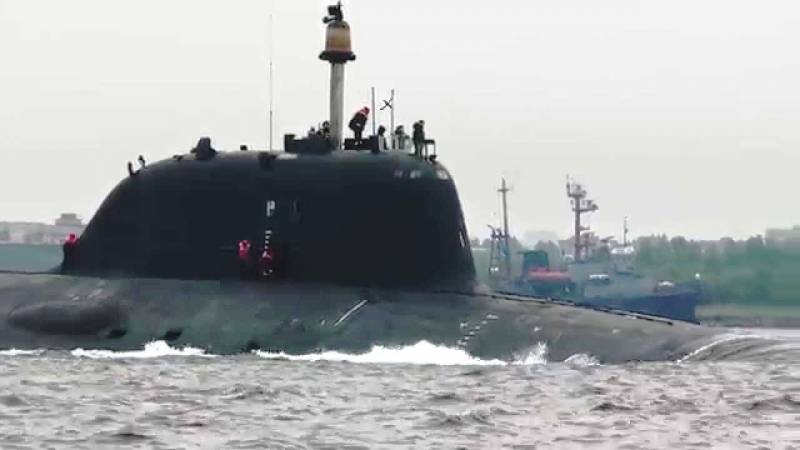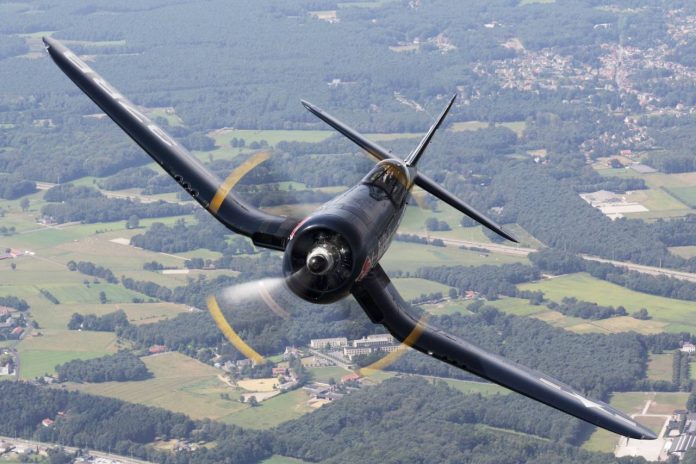
Well, who does not know this aircraft? Flying attach a log with a lantern? Perfectly identifiable even by specialists the F4U "Corsair" from the company "Chance-Vought".
Best (according to the Japanese) and almost the best (According to all the other) carrier-based fighter of World War II.
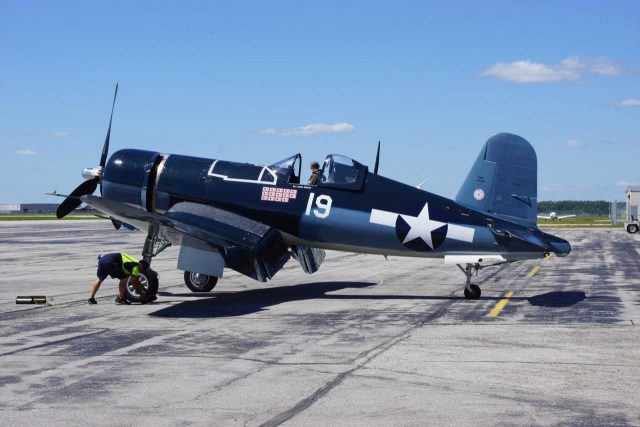
But to begin our conversation today I do not have ..., not a historical perspective, although much without him? I wanted to start with such a concept, conservatism. At all, when we say the word, it usually pops up in my head sort of image of the British gentleman, Sir, constant, like ... like any constant.
And that's wrong!
As experience has shown, true conservatives sat in the American Office of Naval Aviation. And conservatism bordered on uporotyh. Well, how else can you call it, that the aircraft of naval aviation in the United States could only be a biplane?
Outside 1937 year, and in the minds of biplanes. it, sorry, difficult to understand and accept.
«Kertiss» XF-13C, which made its first flight as a monoplane XF-13C-1, at the insistence of the fleet has mutated into polutoraplan XF-13C-2. Just make him a biplane was technically expensive, the only thing that saved. But this mutant fly is so sad, I had to return everything back.
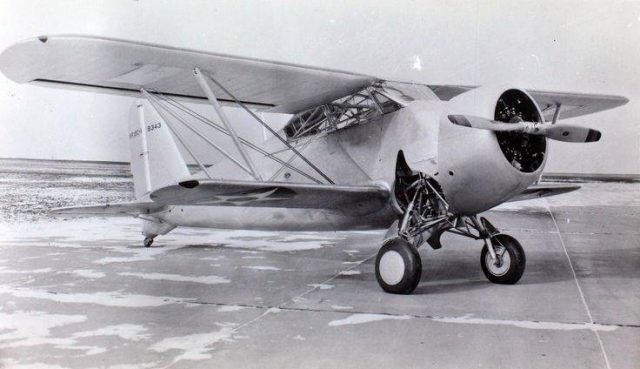
What they say, XF4F-1, future "wildcat", also ordered as a biplane!
Generally, there was a problem: a meander along the two wings of a biplane. I do not know, to be honest, that saved the American naval aviation, whether shootings, whether a car accident, but the fact: to 1940 year fans settled down biplanes (or were calmed down). And began work on a normal aircraft.
But by the time everything was so sad, that the land "Buffalo» F2A-2, about which I hardly even undertake to write something, because it was one of the aircraft in the history of SAD, betrayed 542 km / h in a batch embodiment. While Marine fighter pilot HF4F-3 as expected engine Pratt & Whitney XR-1830-76 Twin Wasp pointed to the test 536 kmh.
There was also a stunning idea to build a twin-engined fighters decked, but, thank God, it did not come. Although the "Grumman" The proposed project twin-engine plane ...
But, actually, and "Vought» shine inventions. In all airplanes of the time set screws with a diameter of 3-3.5 meters, and developers "Corsair", to make the "plow" all 1850 "Horses" engine, set screw diameter 4 m!
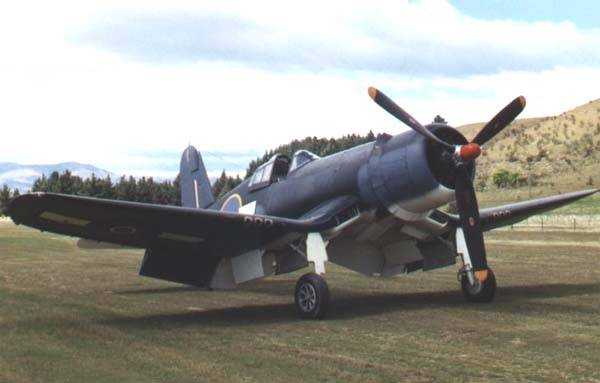
clear, I had to lift up the nose of the aircraft, and here's a wing shape "inverted gull". Otherwise I would have had to make very high landing gear, and that would have been a weak point of the aircraft. Plus bonus problems with cleaning the wing struts in.
Armament of four machine guns: two synchronous caliber M1 7,62 mm and two wing-caliber M2 12,7 mm.
He showed the maximum test speed on the plane in 608 km / h at an altitude of 7000 m. He was recognized as the winner of the competition and 30 June 1941 the fleet has placed an order for 584 aircraft for the fleet of aircraft and Marine Corps. The plane in the firm was named "Le Corsaire", as well as the fate of the aircraft came God forbid everyone, the pirate names have become a tradition for the fighter firm "Wout".
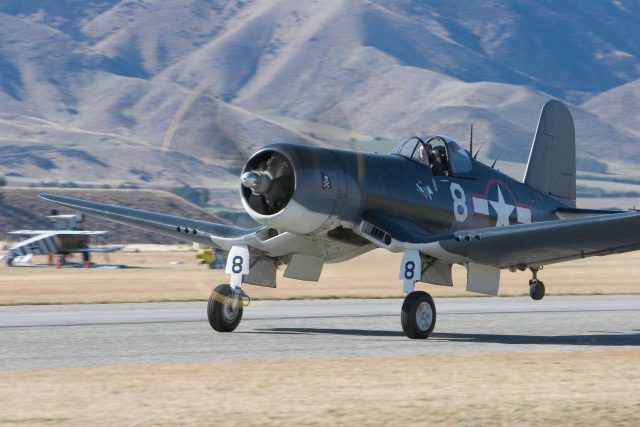
Orders - it's great, but with the commissioning it turned out not very smooth. The first flights of "Le Corsaire" with the deck of an aircraft carrier in the sea found a whole bunch of problems. Screw, this huge screw creating a reaction torque, that when landing the plane fills up the left plane, and began «kozlity», and not just because, and one "leg" chassis, easily skipping ropes arresting gear.
I caused a lot of criticism canopy cover, which really bothered review and spawned the nickname "Birdcage". Plus it zaplevyval engine oil when fully open cooling flaps.
It was necessary to urgently carry out a series of improvements. And, our approach was more, than US. With oil on the lamp problem was solved a simple fixation of the upper flaps in the closed position.
With the reluctance torque had to suffer, but also decided to. Kiel dovernul two degrees to the left, and on the right edge of the wing next set Aluminum Area - "flow disrupter", reduced the amount of lift the right-hand console and thus reduces the reaction torque.
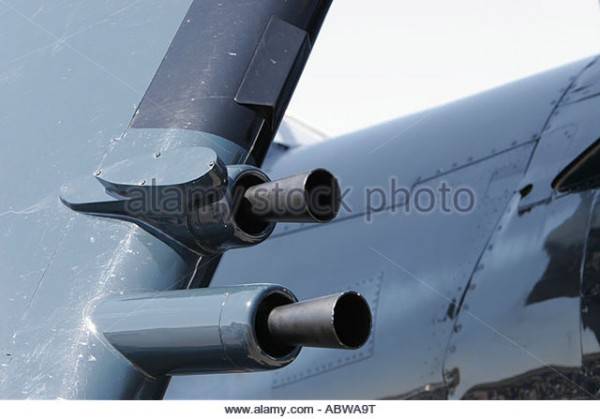
In the picture perfectly visible over guns Area, prisharashenny to the wing. This is the disrupter.
If a whole - quickly processed with a hammer and a file.
And "Le Corsaire" did go into a series of, and not just go, and actually flew. so much so, I had to attract other manufacturers. At the company's plants «Brewster» produced basic model "Dogs", under the designation F3A-1, a "Gudʹir" (it is not only the tire!) He built on the same aircraft under the designation FG-1, but without wing folding mechanism, and "gudirovskie 'planes were US Marine Corps.
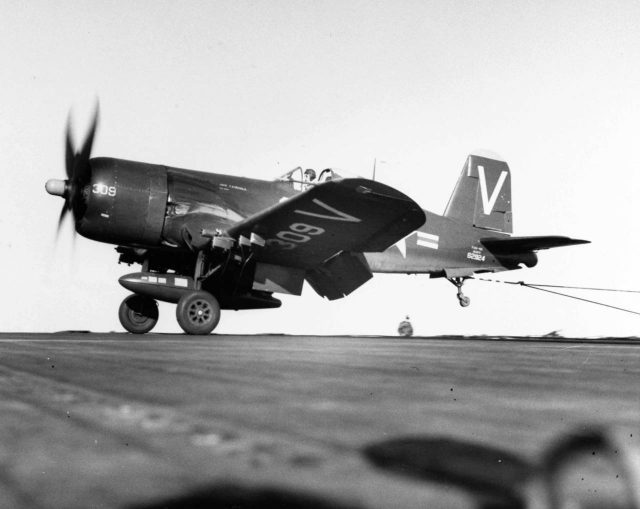
Lantern has completed the later. Almost "bubble" like "Spitfire", the sliding portion of the convex shape has decided to review the issue. Furthermore, cabin wall lowered to 230 mm for a better view of the side-down.
Well, just around the corner it was trial by combat.
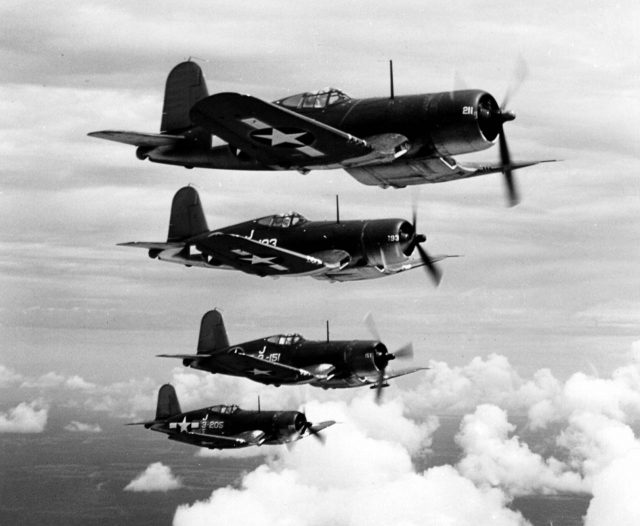
Baptism of fire "Corsairs" were in the skies above the Solomon Islands, it is on Guadalcanal in February 1943 , the first squadron of F4U was transferred. AND 14 February saw the first military clash with the enemy. The national team of a group of three squadrons of F4U, R-40 and R-38, escorting bombers, It was intercepted by Japanese fighters "Zero". The ratio was not in favor of the Americans, 36 against 50, so that the Japanese staged a Yankees uniform rout.
two F4U, Four F-38, two R-40, two PB4Y at three downed "Zero" - agree, so-so debut.
But US pilots simply not learned in the process of relearning their planes. Many researchers have noted this topic, what 20 hours to retrain with "Buffalo" or "Wild Cat" was clearly not enough. Plus, a complete lack of tactics of aircraft, based on its strengths.
So for the first time the Japanese are very much worked on the "training" of American pilots, it is not the best way affected the reputation of the aircraft.
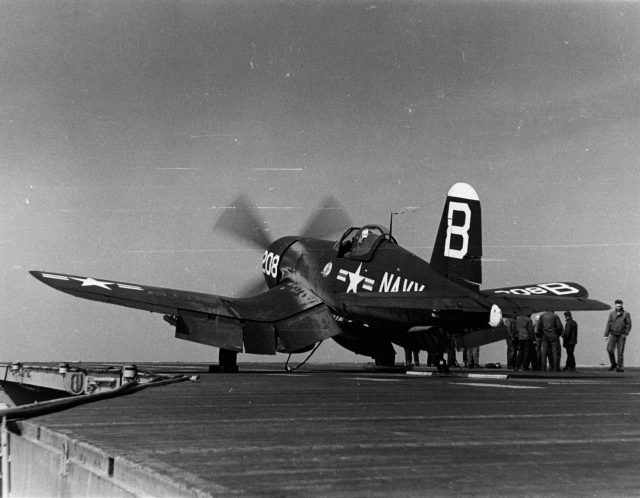
Over time, however, everything fell into place, Americans are very fast learners, especially if they are at the same time hard to beat.
"Zero" superior "Le Corsaire" in close combat maneuvering. "Dogs" were quicker and smarter than gaining height. On this basis there was a tactic, when the Americans tried to attack first, Using these advantages.
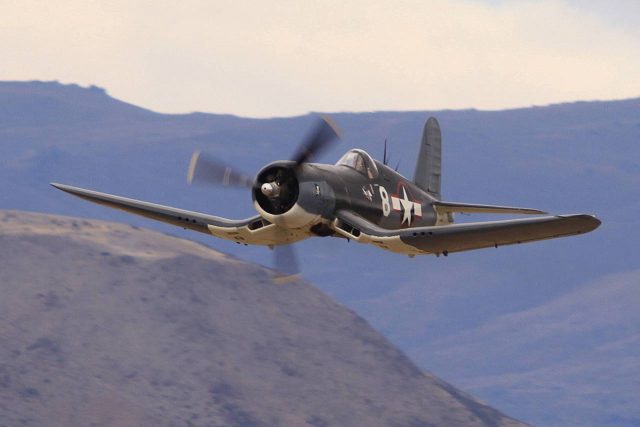
Finding Japanese planes, Yankees quickly gained altitude, and then attacked the dive. After the attack, they went climbing and occupied a new frontier for the second attack. Something similar to the "swing", pilots who used "Focke-Wulf".
In close combat it was better not to get involved, because there had to rely only on the structural strength or speed capabilities, through which it was possible to break away from the enemy.
But in general, Marine Corps aircraft "dropped", and by the end of 1943 , all US fighter squadrons in the South Pacific Marine were rearmed fighters F4U, and by this time «corsairs» it was destroyed 584 enemy aircraft.
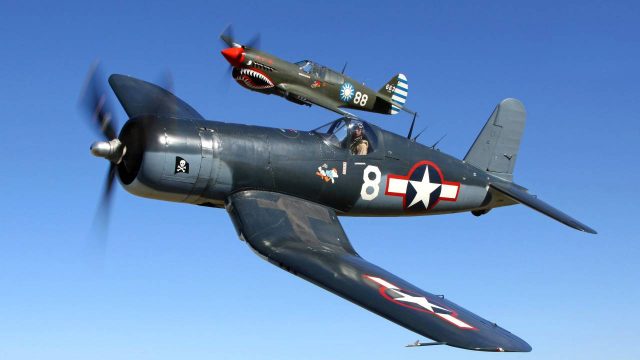
With naval aviation was the most difficult. It was necessary to refine the problem, preventing landing, mentioned above, so that marine pilots received "Le Corsaire" later Marines.
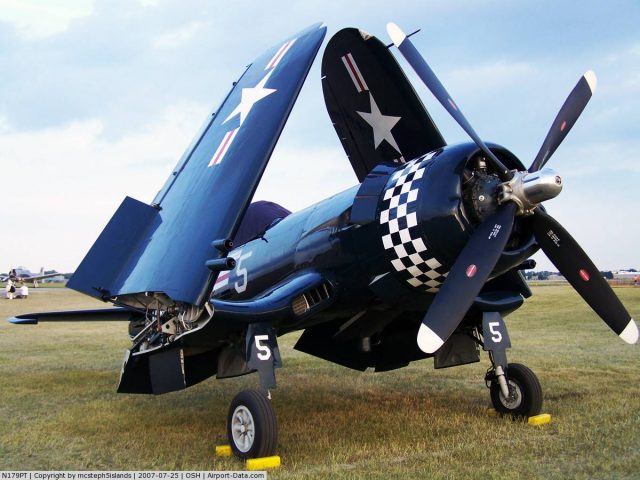
The whole second half of the war, "Le Corsaire" otpahal in full.
Can we call him the best? Many think so. for example, Japanese researchers and the participants of the war definitely gave the palm to this plane.
However, there are many opinions on the subject of, that's still better palubnikom was F6F «Hellket". Paradox, but it is delaying bringing to mind "Le Corsaire" and gave rise to this machine, which has been very successful, too. But the comparison F6F and F4U - a separate issue.
Statistics, especially by Americans, - a very difficult thing.
It seems to be the "Corsair" with her complete order, in air combat pilots destroyed F4U 2140 Japanese planes while losing all 189 machines. total, as the saying goes, victory.
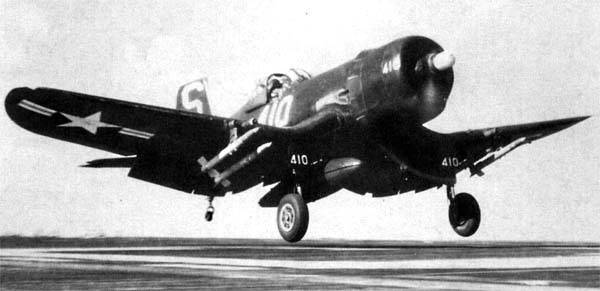
But if you look further and very small letters, it turns out, the so-called "other" losses significantly exceed that figure.
"Other" - this is because non-combat aircraft called the destruction of anti-aircraft artillery at me (unlike Americans) do not dare. And they easily.
so, "Other", including non-combat losses "Le Corsaire" Now look so:
- Losses from antiaircraft fire - 349 machines.
- Other reasons for fighting - 230 machines.
- During non-combat missions - 692 cars.
- Broken when landing on aircraft carriers - 164 cars.
And the picture is not so rosy. 189 aircraft lost in aerial combat and 1435 on other reasons,. Americans have always been able to be considered beautiful in their favor, "Le Corsaire" is no exception.
clear, that some things look weird, but "other reasons for fighting" - is mainly due to shturmovok airfields and aircraft carriers.
But the fact, that during non-combat (i.e, educational and boiling) flight ditched more cars, than fighting, shows, that the aircraft was not easy to manage.
In fact it was so, "Corsair" was not the sort of standard carrier-based fighter in the management plan, conversely. This control of the airplane required a decent pilot training, properly, These figures show in the first place on this.
But who mastered this car, he has at his disposal a very good and powerful weapon.
Let's give the floor to those, who would be best able to tell about the "Le Corsaire": American pilots.
Kenneth Welsh, ILC pilot, the first shot down 10 enemy planes to "Le Corsaire".
«We got "Le Corsaire" at the end of October 1942 g. Before being sent to the Pacific Ocean, each of us has flown to "Le Corsaire" by 20 hours, I performed a fire in flight and one night flight.
The training program was clearly compressed, however, the need to "Le Corsaire" presence in the Pacific Ocean was felt very keenly. Learn upcoming battles. Guadalcanal based fighters F4F «Wildcat», that with great difficulty could even provide air defense of the island, but to take part in offensive operations, they do not let the lack of range.
Japanese pilots to "Zero" played with "Wildcat", like a cat with a mouse. For offensive operations in the Pacific theater of war came only two American fighter aircraft - Lockheed P-38 "Lightning" and the Chance-Vought the F4U-1 "Corsair".
My first real combat mission took place 14 February. The Japanese then we waited. We once again escorted four-engine "Liberators", This time they were to strike at the Kahili airfield. Japanese service monitoring and alerting found our planes long before the approach to the target. Over Kahili we were greeted by "Zero". In that fight, we lost two guys in our squadron, In addition, two were shot down "Liberator", four "Lightning" and two P-40 single-engine fighter. The Japanese lost three "Zero", one of which ran in the frontal attack to "Le Corsaire". Our first battle squadron entered history as "Terrible Valentine's Day". A similar flight was scheduled for the morning 15 February, but it was canceled just before take-off.
We first got the "Dogs", no one could explain to us the strengths and weaknesses of the newest fighter, because no one knew them. The first is always difficult, needed by the developing tactics of air battles on the F4U. We knew - after our "Dogs" entered service sets squadrons, pilots who will take an example from us. I asked one of the pilot, who won in the first days of the battle for Guadalcanal impressive results, Summers of «Uayldkэte», what he thought of the battles against the "Zero". He replied briefly: "You do not sit on his tail".
I quickly learned, that height is a key factor in a dogfight. those above, that dictates the course of the battle. In this regard, the pilots "Zero" is not shining - we made them easy to climb. It took a while, but we have come up with effective methods of air combat with Japanese fighters. More on the eve of a meeting with the "Zero" I did not feel like a victim. I knew, What is "Zero" and how to fight them.
I destroyed all 21 Japanese aircraft, 17 were "Zero". I myself shot down three times, and always at once - I did not see the enemy. thinking, and that the Japanese pilots, which I brought down, I also have not seen».
Howard Finn, 1-second lieutenant from the same squadron VMF-124:
«When we started to fight, the Japanese were still experienced flight personnel. These pilots owned the "Zero" brilliantly, they are steep turns with very small radii. Dajye 'Vel' (dive bomber Aichi D3A - approx.) once I laid a turn, that I could hardly hold back on his tail. Low speed did not allow the bomber to escape - I still shot it down.
In February 1943 g. we fought a dangerous opponent, but then the professional level of the Japanese pilots in weight began to decline, their actions become predictable, and a variety of types of maneuvers decreased. not infrequently, discover our approach, Japanese battle turn left from the scrum. I have no doubt, that summer 1943 g. Japanese lost many experienced pilots. Fill these frames the enemy was unable to finish the war».
What can be concluded here?
F4U «Le Corsaire" was a landmark aircraft. With a pretty decent flight characteristics and a standard for the US fighter armament of heavy machine guns Browning wing.
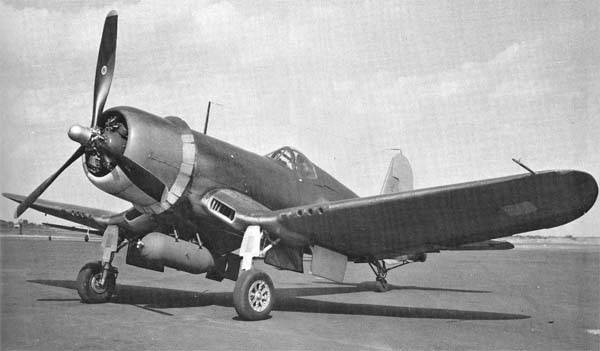
Difficult to manage, requiring training of pilots above average, but with the ability to take away all that is possible and even a little bit more than that.
Minus "Corsair" can be considered in the management of complexity, Statistics figures, it only confirms. In one of these materials, we try to compare "Hellketa" and "Le Corsaire", simply, to try to find out, Which of these aircraft can be called really the best.
As for the video, the, despite, that in the network there is a bunch of movies, I suggest you watch the training video on "How to fly to the" Le Corsaire ". Kinoposobie for Dummies those times, perfectly illustrating the whole technical part of our hero.
Features F4U «Le Corsaire":
Wingspan, m:
- full: 12,49
- with folded wings 5.20
Length, m: 10,26
Height, m: 4,49
wing area, m2: 29,172
Weight, kg:
- empty aircraft: 4 175
- normal take-off: 5 634
- maximum take-off: 6 654
Engine: 1 х Pratt Whitney R-2800-18W х 2100 HP.
full speed, kmh
- the land: 595
- on high: 717
practical range, km: 1 617
The maximum range, km: 990
The maximum rate of climb, m / min: 1179
Service ceiling, m: 12 650
weaponry:
- six 12.7 mm machine guns M2 (b / c 2400 rounds)
— 2 bombs 454 kg or 8 rockets HVAR 127 mm.
/Roman Skomorokhov, topwar.ru/









